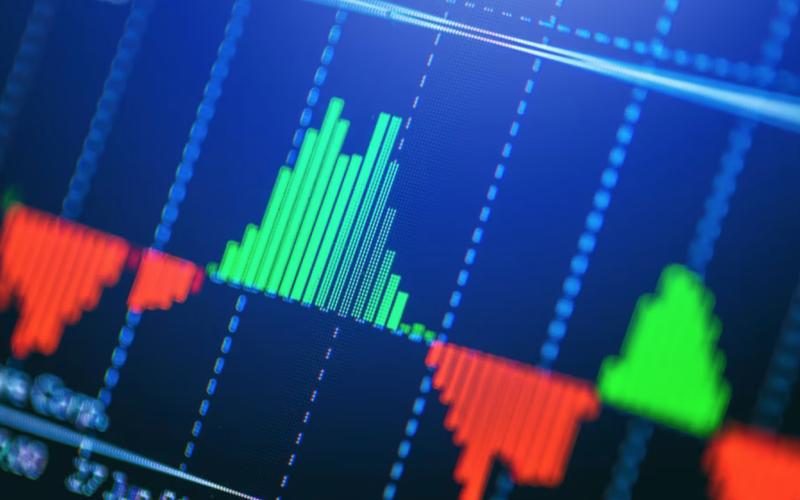by Equity Research Team, Charles Schwab & Company Ltd.
S&P 500 hits resistance

Source: Charles Schwab, Bloomberg, as of 8/19/2022.
Indexes are unmanaged, do not incur fees or expenses and cannot be invested in directly. Past performance is no guarantee of future results.
The S&P 500 lost 1.3% on Friday capping off a weekly loss of 1.2%, which ended the prior four-week stretch of gains. Shown below is the slight rolling over in the percentage of stocks among the three major indexes trading above their 50-day and 200-day moving averages.
Breadth rolling over?

Source: Charles Schwab, Bloomberg, as of 8/19/2022.
Indexes are unmanaged, do not incur management fees, costs and expenses and cannot be invested in directly. Past performance is no guarantee of future results.

Source: Charles Schwab, Bloomberg, as of 8/19/2022.
Indexes are unmanaged, do not incur management fees, costs and expenses and cannot be invested in directly. Past performance is no guarantee of future results.
Breadth thrust … with a but
The rally that began in mid-June was directly related to the nearly 3.5% peak in the 10-year Treasury yield; with only two days separating that peak on June 14 with the S&P 500's low on June 16, shown below. Perhaps contributing to last week's weakness in stocks was the renewed upward move in bond yields—from a low that nearly reached 2.5% as August began, to about 3% today.
Bond yields driving stocks?

Source: Charles Schwab, Bloomberg, as of 8/19/2022.
Indexes are unmanaged, do not incur fees or expenses and cannot be invested in directly. Past performance is no guarantee of future results.
As shown in our crowd-favorite index drawdowns table below, all three major indexes remain in negative territory year-to-date (YTD); though well up from their mid-June lows. We made some adjustments to the table for the purposes of this report; and have included the average member return from their YTD lows, as well as for each index's largest 10 members. In the final column, we also show the maximum "draw-up" (perhaps we have coined a new term?) for each index from their recent lows. Using the simple +20%/-20% definitions for bull and bear markets, given the >20% draw-ups for both the NASDAQ and Russell 2000, both re-entered bull markets (perhaps just in cyclical terms); while the S&P 500 did not hit that mark.
Drawdowns and "draw-ups"

Source: Charles Schwab, Bloomberg, as of 8/19/2022.
Indexes are unmanaged, do not incur management fees, costs and expenses and cannot be invested in directly. Past performance is no guarantee of future results. Some members excluded from year-to-date return columns given additions to indices were after January 2022.
What say you quilts?
Sector quilt highlights volatility
![Over the past 12 months, Energy was the best performing sector with a gain of 76% while Communication Services was the worst with a loss of -28%.]](https://www.schwab.com/learn/sites/g/files/eyrktu1246/files/082222_F_Sector%20Quilt.png)
Source: Charles Schwab, Bloomberg. As of 8/19/2022.
Sector performance is represented by price returns of the following 11 GICS sector indices: Consumer Discretionary Sector, Consumer Staples Sector, Energy Sector, Financials Sector, Health Care Sector, Industrials Sector, Information Technology Sector, Materials Sector, Real Estate Sector, Communication Services Sector, and Utilities Sector. Returns of the broad market are represented by the S&P 500. Indexes are unmanaged, do not incur management fees, costs and expenses and cannot be invested in directly. Returns assume reinvestment of dividends, interest, and capital gains. Past performance is no guarantee of future results.
Factor quilt highlights recent shifts
![Over the past 12 months, Value was the best performing factor with a gain of 7% while Volatility was the worst with a loss of -6%.]](https://www.schwab.com/learn/sites/g/files/eyrktu1246/files/082222_G_Factor%20Quilt_0.png)
Source: Charles Schwab, Bloomberg. As of 8/19/2022.
The Dividends portfolio measures the most recently announced net dividend (annualized) divided by the current market price. The Growth portfolio captures the difference between high and low growers by using historical fundamental and forward-looking analyst data. The Leverage portfolio looks at firms' level of leverage using book and market leverage, along with debt to total assets. The Momentum portfolio separates stocks that have outperformed over the past year vs. those that have underperformed. The Profitability portfolio studies firms' profit margins using return on equity, return on assets, return on capital employed, and EBITDA margin. The Size portfolio distinguishes between small and large stocks using market capitalization, sales, and total assets. The Trade Activity portfolio is a turnover-based measure that looks at trading volume normalized by shares outstanding. The Value portfolio differentiates between "cheap" and "rich" stocks using valuation metrics such as earnings/price and book/price. The Variability portfolio gauges how consistent earnings, cash flows, and sales have been in recent years. The Volatility portfolio differentiates between more and less volatile stocks by looking at various aspects such as return volatility over the latest 252 trading days. Indexes are unmanaged, do not incur fees or expenses and cannot be invested in directly. Returns assume reinvestment of dividends, interest, and capital gains. Past performance is no guarantee of future results.
Reversion to the meme
Shown below, the "original" memes such as GameStop and AMC had double- and triple-digit percentage gains over the past month (the metric shown is each stock's performance from its rolling 40-day low). However, Bed Bath & Beyond broke through the ceiling in recent weeks, surging by more than 400% at one point.
The meme extreme

Source: Charles Schwab, Bloomberg, as of 8/19/2022.
Past performance is no guarantee of future results. Individual stocks shown for illustration purposes only.
Tragically, for many retail traders—especially those who "got in" on the recent rally near the peak—prices have collapsed over the past few trading days for stocks like Bed Bath & Beyond. In fact, Friday's swoon was the stock's worst day in history, falling a whopping 41%. Compared to the early-2021 frenzy, the irony associated with the stock's decline this time is that it was a billionaire investor's fund that came out on top—pocketing a hefty gain from a sale near the peak, which triggered the rout in the stock. On top of that, capping off the trading week was an announcement that the company's suppliers are restricting or halting shipments as the retailer has fallen behind on payments.
As is always the case, we never point out individual stocks for recommendation (either buy or sell) purposes. The flash rally and crash of stocks like many of the memes should serve as an important reminder for investors: Neither "get in" nor "get out"—and/or "get rich quick" schemes—are investing strategies. They simply represent gambling on moments in time—the antithesis of investing, which should be a disciplined process over time. That's a good place to end.
*****
The information provided here is for general informational purposes only and should not be considered an individualized recommendation or personalized investment advice. The investment strategies mentioned here may not be suitable for everyone. Each investor needs to review an investment strategy for his or her own particular situation before making any investment decision.
All expressions of opinion are subject to change without notice in reaction to shifting market conditions. Data contained herein from third-party providers is obtained from what are considered reliable sources. However, its accuracy, completeness or reliability cannot be guaranteed. Supporting documentation for any claims or statistical information is available upon request.
Examples provided are for illustrative purposes only and not intended to be reflective of results you can expect to achieve.
Investing involves risk including loss of principal.
Past performance is no guarantee of future results and the opinions presented cannot be viewed as an indicator of future performance.
All corporate names and market data shown above are for illustrative purposes only and are not a recommendation, offer to sell, or a solicitation of an offer to buy any security.
Schwab Equity Ratings (SER) use a scale of A, B, C, D, and F, and are assigned to approximately 3,000 U.S.-traded stocks. Schwab's research outlook is that A-rated stocks, on average, will strongly outperform, and F-rated stocks, on average, will strongly underperform the equities market during the next 12 months.
Schwab does not recommend the use of technical analysis as a sole means of investment research.
Diversification strategies cannot ensure a profit or protect against a loss in any given market environment.
Indexes are unmanaged, do not incur fees or expenses and cannot be invested in directly. For more information on indexes please see www.schwab.com/indexdefinitions.
Source: Bloomberg Index Services Limited. BLOOMBERG® is a trademark and service mark of Bloomberg Finance L.P. and its affiliates (collectively "Bloomberg"). Bloomberg or Bloomberg's licensors own all proprietary rights in the Bloomberg Indices. Neither Bloomberg nor Bloomberg's licensors approves or endorses this material, or guarantees the accuracy or completeness of any information herein, or makes any warranty, express or implied, as to the results to be obtained therefrom and, to the maximum extent allowed by law, neither shall have any liability or responsibility for injury or damages arising in connection therewith.














